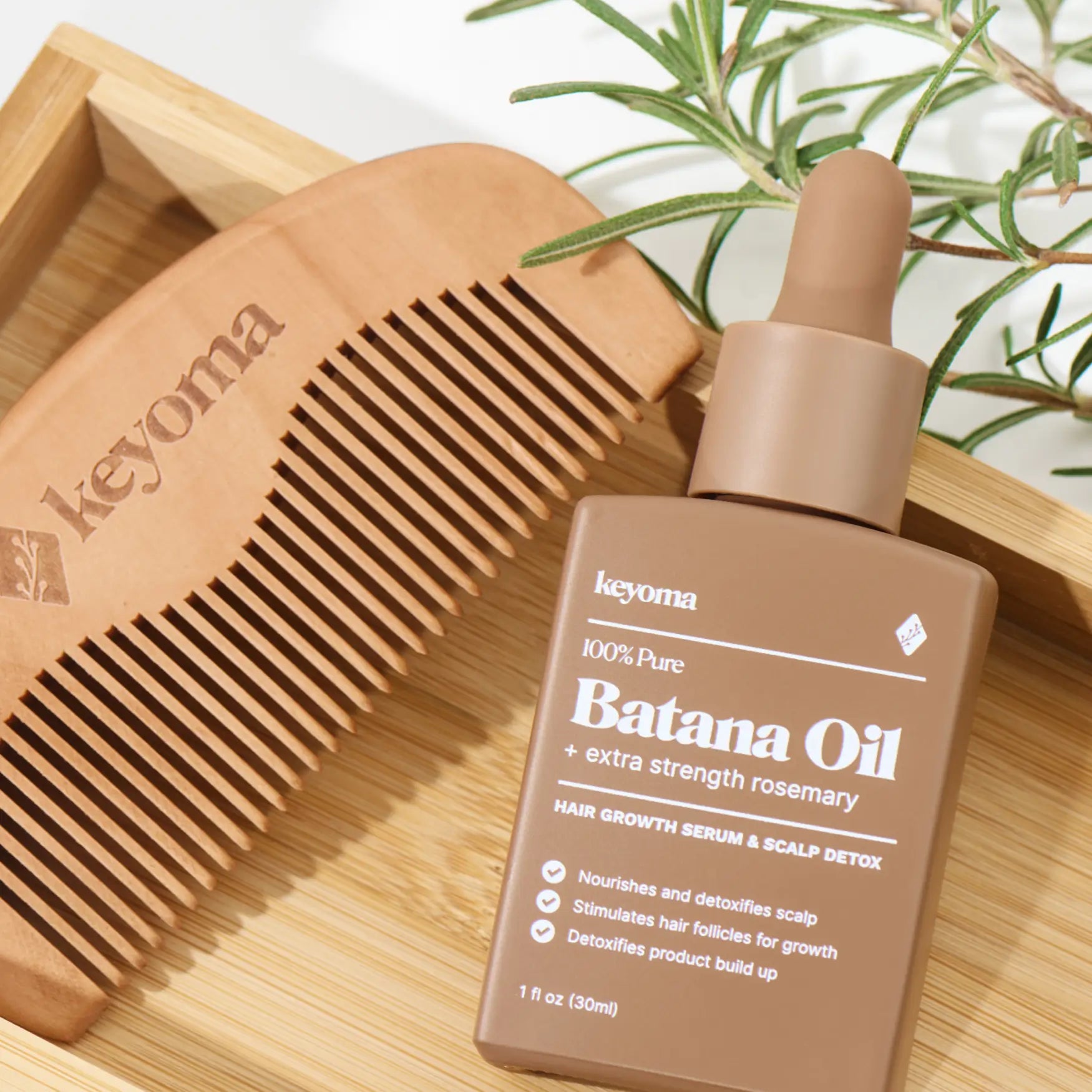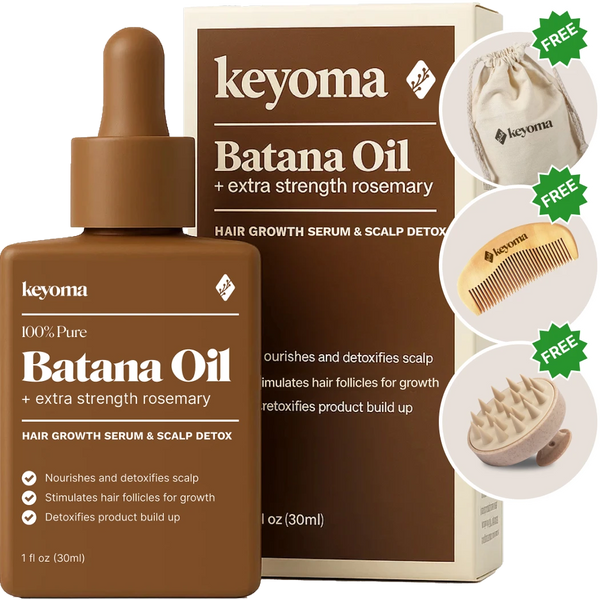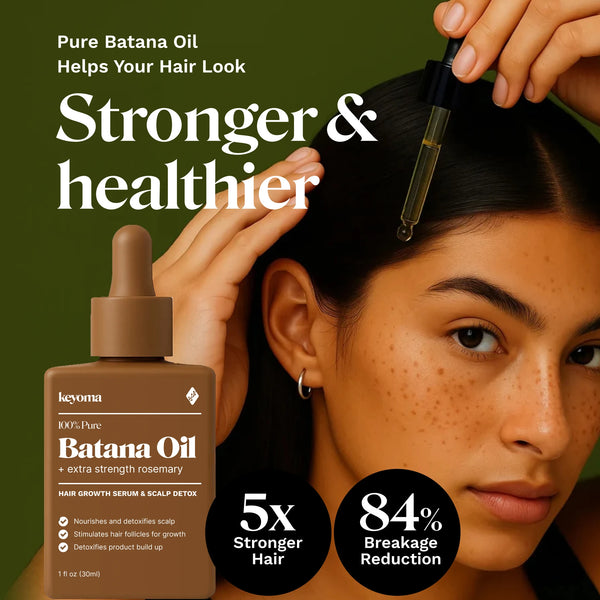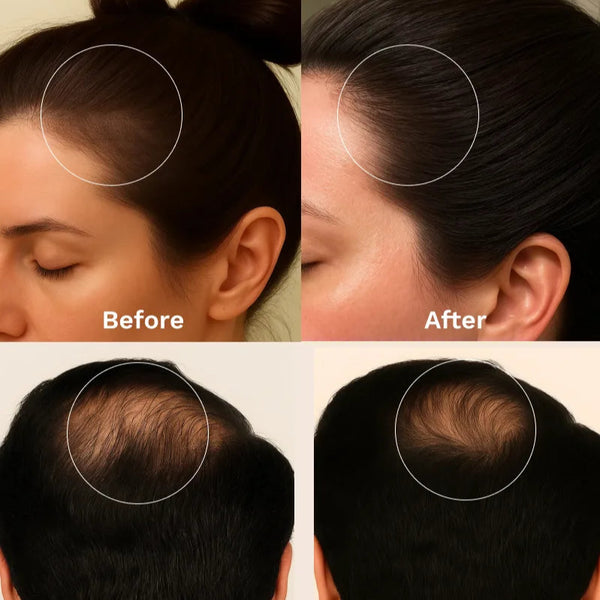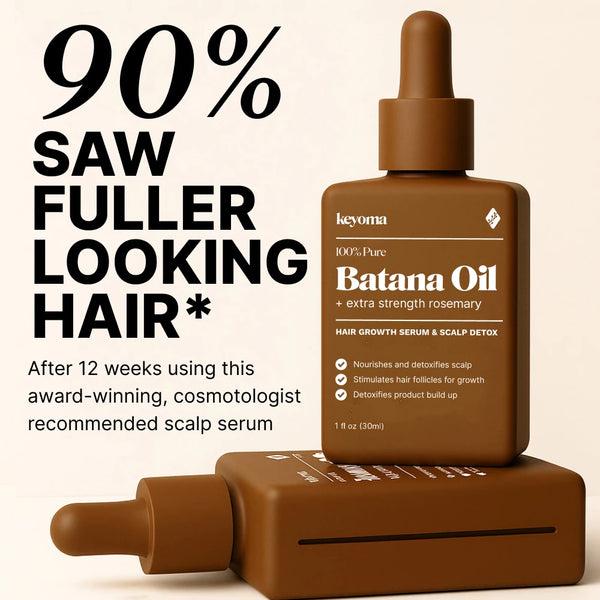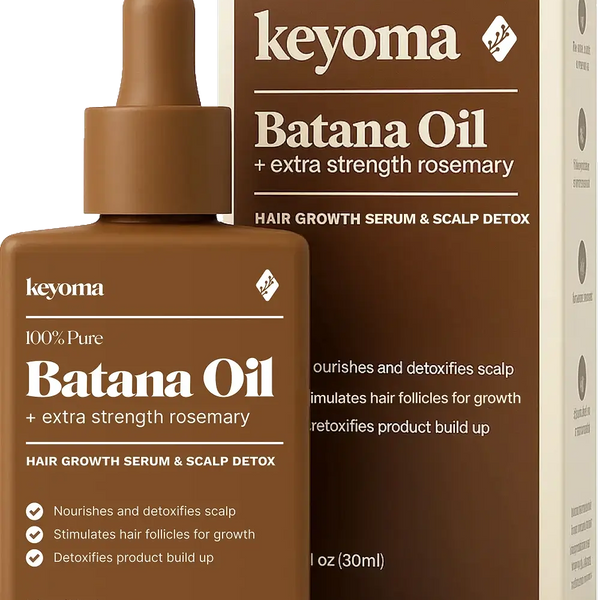In this article
I’ll walk you through a routine you can keep. Decide what you want to see in 12 weeks. We will create one clear plan, match it to your scalp, and track simple checkpoints so you can tell it works. I will keep every step short and practical, explain why it matters, and help you avoid common mistakes. Ready to begin?
Key Takeaways
-
Dilute rosemary to 0.5 to 1 percent in carrier and patch test.
-
Avoid phototoxic citrus in leave-ons, store blends cool and dark, make small batches.
-
Daily four-minute scalp massage may help, meaningful improvements often appear around six months.
-
Customize frequency by scalp type and condition, avoid facial use when seeking beard growth.
How to Dilute Rosemary Oil for Scalp
For leave-on scalp blends, stay around 0.5–1% total essential oil, and go lower if your skin reacts easily. If you add phototoxic citrus oils to a leave-on blend that may see sun, keep each one within its IFRA maximum. For a quick 1% mix, use 1 drop per 1 tsp / 5 mL carrier, or about 6 drops per 1 oz / 30 mL.
Simple step-by-step ratios on how to dilute rosemary oil:
-
Set a target strength: Use 0.5–1% total essential oil for leave-on scalp formulas. Choose the lower end if your skin is sensitive.
-
Choose a carrier: Pick a lightweight oil your scalp tolerates, then make the dilution in that carrier. You can keep notes about your carrier picks in the “Carrier Oils” section of this guide.
-
Prep a clean bottle: Use amber glass with a dropper or needle tip. A 30 mL (1 oz) or 60 mL (2 oz) bottle works well for trial batches.
-
Measure the dilution:
-
-
By drops (quick method):
-
-
-
30 mL bottle: 0.5% = 4 drops rosemary; 1% = 9 drops.
-
60 mL bottle: 0.5% = 8 drops; 1% = 18 drops.
-
-
-
By weight (more accurate):
-
-
-
30 g batch: 0.5% = 0.15 g rosemary + 29.85 g carrier; 1% = 0.30 g rosemary + 29.70 g carrier.
-
60 g batch: 0.5% = 0.30 g rosemary + 59.70 g carrier; 1% = 0.60 g rosemary + 59.40 g carrier. (Percent = grams of essential oil ÷ total grams × 100.)
-
-
Combine and label: Add the carrier first, then rosemary oil. Swirl gently. Label the percentage, date, and carrier used.
-
Patch test before routine use: Do a ROAT test. Apply a pea-size amount to a small area twice daily for several days and watch for redness or itch. Only continue if the area stays calm.
-
Mind sun safety if you add other oils: If you include expressed citrus oils, keep within phototoxic limits for leave-on products. For example, bergamot ≤0.4%, lemon ≤2%, grapefruit ≤4%.
-
Store to slow oxidation: Keep the bottle tightly closed, cool, and away from light. Make small batches you can finish within a few months.
Rosemary Oil with Carrier Oils for Hair
Blend your chosen carrier with rosemary at the dilution above, then raise frequency gradually to see how your scalp responds.
Match the carrier to the job, then add rosemary at your target dilution:
-
Batana: unrefined oil rich in vitamin E and fatty acids that can smooth frizz, add shine, and improve manageability in scalp masks and hair treatments, especially for dry, curly, or coily textures.
-
Coconut: uniquely penetrates hair and reduces protein loss during wash and comb cycles. This works well before shampoo on fragile or processed hair.
-
Jojoba: a liquid wax ester similar to human sebum that adds slip without heaviness.
-
Grapeseed or squalane: light, quick-absorbing feel for fine strands or daytime use.
Scalp Massage with Rosemary Oil
Massage spreads the oil evenly and may deliver mechanical cues that support thicker strands over time. One standardized protocol that showed benefits used about 4 minutes daily for 24 weeks.

Prep and section
Create four quadrants from hairline to nape. If you use oil, apply a 0.5–1% rosemary blend in thin lines along your parts. Keep the total amount light to avoid buildup.
Set pressure
Use the pads of your fingers only. Apply gentle to moderate pressure that moves the scalp skin without scraping. Nails can irritate follicles and cause micro-injury.
Motions and path
Work in small circles and short press-and-lift motions over each part. Cover the front, crown, sides, then move from nape to top so you do not miss higher-shedding zones.
Timing and cadence
Aim for about 4 minutes total. Use a timer. Consistency across weeks matters more than longer sessions.
Tools (optional)
A soft silicone massager or a low-vibration device can help you keep pressure even. Stop if you notice irritation or flaking.
Leave-In Rosemary Oil Treatment
On a clean scalp that is dry or slightly damp, apply a 0.5–1% rosemary blend in thin lines and massage until it absorbs. If you see redness or itch, lower the concentration or switch to a pre-wash routine.
Rosemary Oil Overnight (Pre-Wash) Application
If you prefer richer contact time, use your diluted blend as an overnight pre-wash on the scalp and lengths, then shampoo in the morning to limit residue, especially if your scalp is oily or acne-prone.
How Often to Use Rosemary for Regrowth
Clinical signals appeared at 6 months rather than 3 months, so choose a cadence you can maintain long term.

Oily Scalp
Start three times per week as a leave-on at 0.5%, or use an overnight pre-wash one to two times per week. Heavy or frequent oiling can aggravate scalp acne and folliculitis. Rinse thoroughly and clarify when needed.
Dry Scalp or High-Porosity Hair
You may tolerate daily light leave-ins or two to three pre-wash sessions each week. Pair with a coconut pre-wash on lengths to limit breakage, then rinse to avoid residue.
Protective Styles, Braids, or Locs
Use a needle-tip applicator to place tiny amounts along parts once or twice per week, then cleanse the scalp every 7–10 days to prevent occlusion and yeast overgrowth. Looser, lower-tension styles reduce traction risk.
Seborrheic Dermatitis or Sensitive Skin
Keep the dilution at 0.5% or less and consider pre-wash only. Some dermatology sources caution that scalp oiling can worsen SD. Prioritize antifungal shampoos during flares and reintroduce oils cautiously.
Postpartum and Telogen Effluvium
Expect shedding to peak around months 3–4 and improve by 6–12 months. A gentle cadence of three to five times per week plus massage is reasonable. Also consider a medical workup for iron and thyroid if shedding continues.
Do You Need to Wash Rosemary Oil Out?
Current evidence does not show that rosemary oil damages your hair. Long stretches without washing may lead to cosmetic issues like greasiness, and regular cleansing solves that easily.
More studies are needed to prove that rosemary oil never harms your hair or scalp.
Rosemary oil for beard growth may work against your goals. Rosemary can block DHT, which supports facial hair growth. Avoid applying it to your face if you want a fuller beard.
Make It Work: Use Keyoma’s Batana Oil with Rosemary Today
Make rosemary oil work by keeping it dilute, applying it to a clean scalp, and staying consistent. Patch test, adjust frequency if your skin reacts, and judge progress across months.
If you want a clean, handcrafted, vegan option with a balanced rosemary-to-batana ratio, choose Keyoma’s Batana Oil with Rosemary to add slip and seal light hydration during your daily scalp massage. I use the same plan with clients and keep it easy.
Featured Product
100% Pure Batana Oil + Rosemary
↓Best Batana Oil to Buy↓
1 Month
Subscribe & Save
- 30-day supply delivered monthly $35
- 30% off for life $6
- Free haircare essentials kit $33
- Free custom wooden comb $10
- Free scalp massager $15
- Free eco-friendly travel bag $8
- 30-Day Money Back Guarantee
- Free Shipping
- Online portal for easy cancel, skip, or pause.
1 Month One Time Purchase
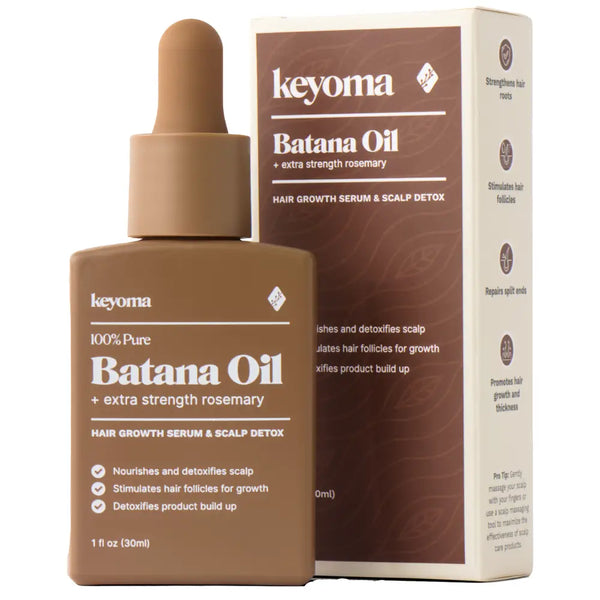
- 30-day supply $50
- 30% off for life $6
- Free haircare essentials kit $33
- Free custom wooden comb $10
- Free scalp massager $15
- Free eco-friendly travel bag $8
Your Cart
Your Cart is empty
Let's fix that
You might like...
Search our store


